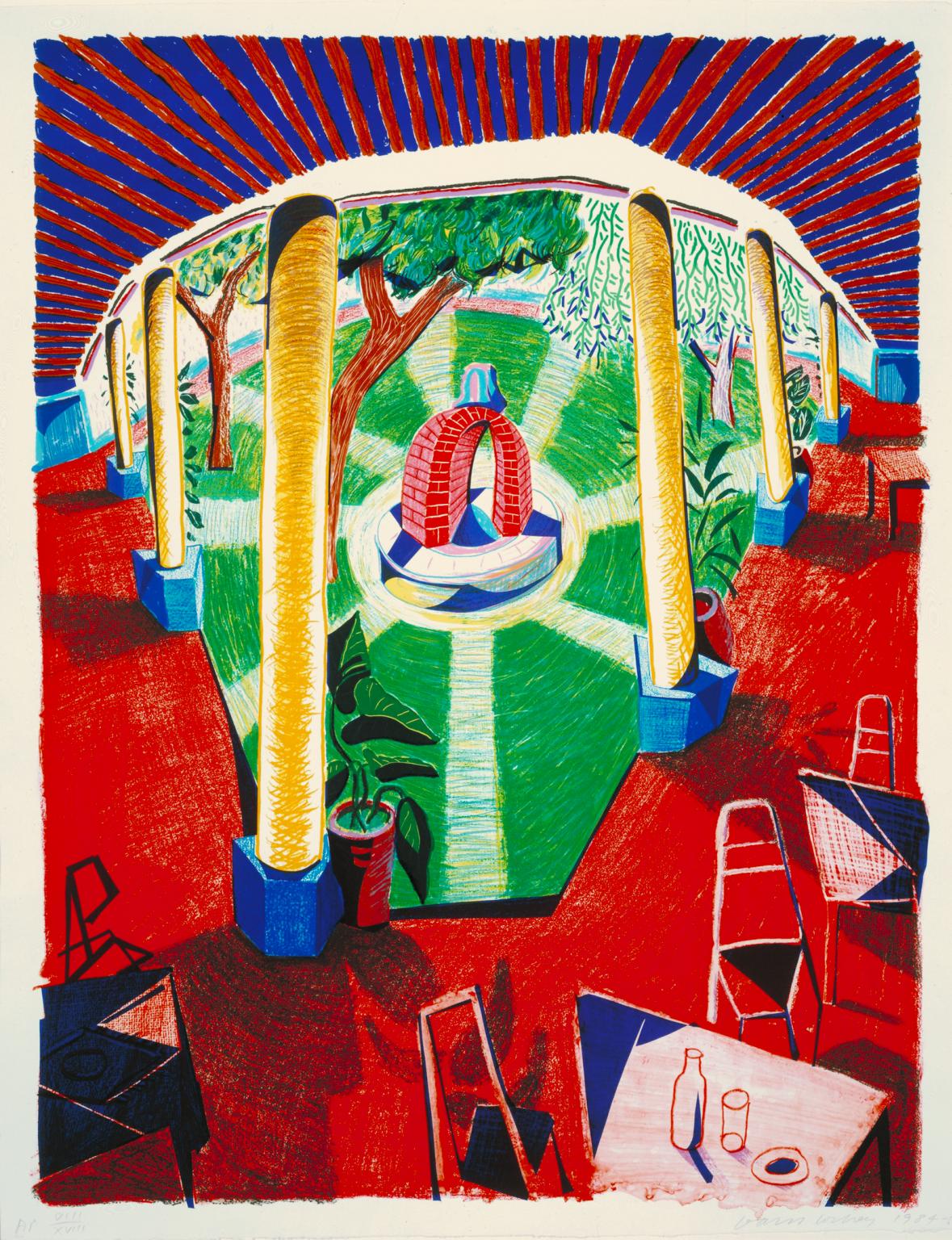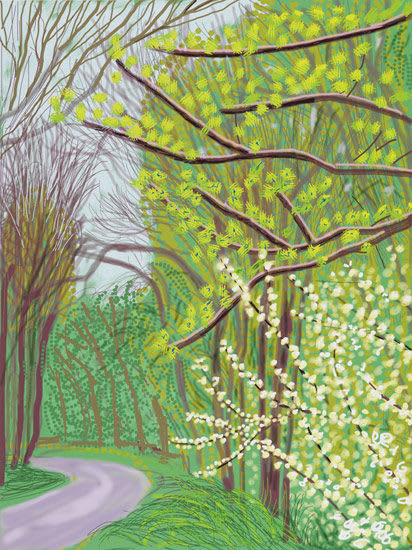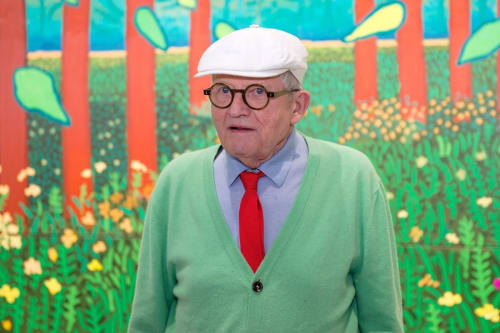David Hockney’s printmaking is as innovative and essential to his legacy as his paintings. Throughout his career, Hockney has approached printmaking as an experimental playground—constantly rethinking how images are constructed, experienced, and reproduced. His most iconic prints not only highlight his technical mastery but also reflect his responses to personal identity, cultural shifts, and evolving visual technologies. We explore the most popular David Hockney works across his illustrious prints.
The Pool Made with Paper and Blue Ink for Book (1980)
Importance:
Part of his renowned Paper Pools series, this lithograph exemplifies Hockney’s obsession with capturing the fluid, ever-changing qualities of water through solid, abstracted forms. The use of colored paper pulp gives the print a tactile depth and spontaneity.
Cultural Impact:
The swimming pool motif became emblematic of the 1980s Californian dream—a lifestyle of leisure, freedom, and modern architecture. For Hockney, it also symbolized a liberated space where queerness, beauty, and sun-drenched quietude could coexist.
Popularity:
One of his most recognized pool works, this print continues to appear in exhibitions and collections worldwide, beloved for its simplicity, freshness, and emotional openness.

The Moving Focus Series (1980s)
Importance:
In this groundbreaking series, Hockney challenged traditional perspective by using multiple vanishing points and viewpoints within the same composition. Works like Hotel Acatlán: Two Weeks Later and Walking Past Two Chairs are standout examples.
Cultural Impact:
Emerging during the rise of postmodernism, Moving Focus echoed shifting ideas about space, time, and perception. These prints mirrored the fragmented way we process images and experiences, anticipating the visual logic of the digital era.
Popularity:
Collectors and critics have hailed Moving Focus as one of Hockney’s most intellectually ambitious print series. The works are complex, playful, and technically dazzling—blurring the line between painting, photography, and print.

The Weather Series: Wind (1973)
Importance:
Part of the experimental Weather Series, “Wind” blends abstraction with environmental observation. Through sweeping lines and atmospheric color fields, Hockney captures the movement and energy of air made visible.
Cultural Impact:
Hockney’s choice to treat the weather as a central subject—not just a backdrop—gave these prints a conceptual weight. “Wind” reflects a growing cultural fascination with sensory experiences, motion, and invisible forces that shape everyday life.
Popularity:
This print remains a favorite for its dynamism and clarity. Its minimalist, almost poster-like aesthetic makes it accessible while maintaining deep emotional and visual resonance.

Lithographs Made of Lines (1970s–1980s)
Importance:
Hockney's dynamic use of light, color and water are best exeplified throygh this important series. The porfolio, totalling 11 prints, is a deep exploration, a study even, of how light interacts with water.
Cultural Impact:
Moving to California in the 1960's Hockney became fasinated with the specific light found in the state that he would famously explore through works including the "Bigger Splash". In the series Lithograph Made of Lines, Hockney continues to cement legacy as one of the 20th greats - specifcally tied to his repeated of swimming pools.
Popularity:
The series is prized by collectors and scholars for its magnifcent treatment of light, reflection and water that has since been unmatched in contemporary tone.

The Arrival of Spring in Woldgate, East Yorkshire (2011–2013)
Importance:
A vivid digital series originally created on an iPad and later printed on a large scale, this work captures the evolution of spring in Hockney’s native Yorkshire. Each image represents a different day or stage in the landscape’s transformation.
Cultural Impact:
By embracing digital tools while portraying rural England, Hockney bridged tradition and innovation. The series reflects contemporary concerns with nature, change, and the merging of technology with fine art.
Popularity:
Widely exhibited and critically acclaimed, these prints struck a chord with a broad audience. They demonstrated that even in his seventies, Hockney remained at the forefront of visual experimentation.

David Hockney’s printmaking defies categorization—spanning classic line drawing, experimental lithography, postmodern perspective, and digital innovation. Each of these prints or series not only marks a high point in his technical evolution but also captures broader cultural dialogues—from Californian hedonism to fragmented modern perception, and from minimalist expression to digitally rendered naturalism. Collectively, they affirm Hockney’s status as not just a painter, but one of the most influential and beloved printmakers of our time. Discover David Hockney original prints for sale or contact info@guyhepner.com to sell David Hockney.
